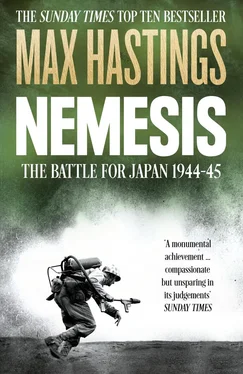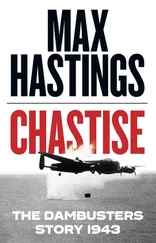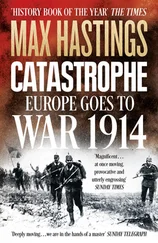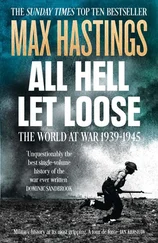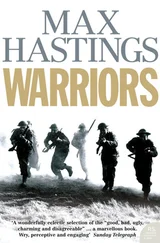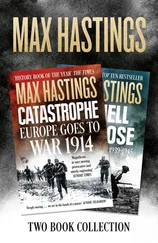It deserves more sceptical scrutiny than it usually receives, however, being justified only in relation to the relatively small forces engaged, and to the expectation of the American people that a nation as rich and technologically powerful as their own should be able to gain victory without great loss of blood. The lives of some 103,000 Americans were sacrificed to defeat Japan, along with 30,000 British, Indian, Australian and other Commonwealth servicemen, in addition to those who perished in captivity. The US pro rata casualty rate in the Pacific was three and a half times that in Europe. America’s total loss, however, represented only a small fraction of the toll which war extracted from the Soviets, Germans and Japanese, and only 1 per cent of the total deaths in Japan’s Asian war. Americans came to expect in the Pacific a favourable exchange rate of one US casualty for every six or seven Japanese. They were dismayed when, on Iwo Jima and Okinawa, the enemy fared better, losing only in the ratio of 1.25:1 and 1.3:1 respectively, though almost all the Japanese losses were fatal, compared with less than one-third of the American. Pervading US strategy was a cultural conceit about the necessary cost of victory. This proved justified, but should not have been taken for granted in a conflict between major industrial nations.
I agree wholeheartedly with American scholars Richard Frank and Robert Newman, that underpinning most post-war analysis of the eastern war is a delusion that the nuclear climax represented the bloodiest possible outcome. On the contrary, alternative scenarios suggest that if the conflict had continued for even a few weeks longer, more people of all nations—and especially Japanese—would have lost their lives than perished at Hiroshima and Nagasaki. The myth that the Japanese were ready to surrender anyway has been so comprehensively discredited by modern research that it is astonishing some writers continue to give it credence. Japanese intransigence does not of itself validate the use of atomic bombs, but it should frame the context of debate.
‘Retributive justice’ is among the dictionary definitions of nemesis. Readers must judge for themselves, whether the fate which befell Japan in 1945 merits that description, as I believe it does. The war in the Far East extended across an even wider canvas than the struggle for Europe: China, Burma, India, the Philippines, together with a vast expanse of the Pacific Ocean. Its courses were directed by one of the most extraordinary galaxies of leaders, military and political, the world has ever seen: Japan’s emperor, generals and admirals; Chiang Kai-Shek and Mao Zedong; Churchill, Roosevelt, Truman, Stalin; MacArthur and Nimitz; LeMay, Slim, Mountbatten, Stilwell—and the men who built the bomb. My purpose, as in Armageddon, is to portray a massive and terrible human experience, set within a chronological framework, rather than to revisit the detailed narrative of campaigns that have been described by many authors, and which anyway could not be contained within a single volume. This book focuses upon how and why things were done, what it was like to do them, and what manner of men and women did them.
Many of us gained our first, wonderfully romantic notion of the war against Japan by watching the movie of Rodgers and Hammerstein’s South Pacific. Memories of its scenes pervaded my consciousness as I wrote Nemesis. For all that the film is Hollywood entertainment, it catches a few simple truths about what the struggle was like for Americans. A host of innocent young men and a scattering of young women found themselves transplanted into a wildly exotic setting. The Pacific’s natural beauties provided inadequate compensation, alas, for the discomforts and emotional stresses which they endured amid coral atolls and palm trees. For every fighting soldier, sailor and Marine who suffered the terrors of battle, many more men experienced merely heat and boredom at some godforsaken island base. The phrase ‘the greatest generation’ is sometimes used in the US to describe those who lived through those times. This seems inapt. The people of World War II may have adopted different fashions and danced to different music from us, but human behaviour, aspirations and fears do not alter much. It is more appropriate to call them, without jealousy, ‘the generation to which the greatest things happened’.
I chose my terms of reference partly in order to depict examples from a wide range of land, sea and air battles. Though there were some great men upon the stage, the history of World War II is, for the most part, a story of statesmen and commanders flawed as all of us are, striving to engage with issues and dilemmas larger than their talents. How many people are fitted to grapple with decisions of the magnitude imposed by global war? How many commanders in history’s great conflicts can be deemed to have been competent, far less brilliant?
While most writers address one eastern campaign or another—Burma, strategic bombing, the war at sea, the island assaults—I have attempted to set all these in context, component parts of the struggle to defeat Japan. I have omitted only the experience of indigenous anti-colonial resistance movements, an important subject so large that it would have overwhelmed my pages. Where possible without impairing coherence, I have omitted familiar anecdotes and dialogue. I have explored some aspects of the struggle that have been neglected by Western authors, notably the Chinese experience and the Russian assault on Manchuria. Nehru once said scornfully: ‘The average European concept of Asia is an appendage to Europe and America—a great mass of people fallen low, who are to be lifted by the good works of the West.’ Twenty years ago, that princely historian Ronald Spector puzzled over the fact that Westerners have always been less interested in the war with Japan than in the struggle against Germany. Remoteness, both geographical and cultural, is the obvious explanation, together with our often morbid fascination with the Nazis. Today, however, readers as well as writers seem ready to bridge the chasm with Asia. Its affairs loom huge in our world. An understanding of its recent past is essential to a grasp of its present, especially when Chinese grievances about the 1931-45 era remain a key issue in relations between Beijing and Tokyo.
Some set pieces—Leyte Gulf, Iwo Jima, Okinawa—are bound to be familiar. I have attempted no primary research on the dropping of the atomic bombs, because the archives have been exhaustively explored and the published literature is vast. Other episodes and experiences may come fresh to readers. I have addressed the issue of why Australia seemed almost to vanish from the war after 1943. Australian soldiers played a notable, sometimes dazzling, part in the North African and New Guinea campaigns. Yet the country’s internal dissensions, together with American dominance of the Pacific theatre, caused the Australian army to be relegated to a frankly humiliating role in 1944-45.
All authors of history books owe debts to earlier chroniclers, and it is important to acknowledge these. I am following a path trodden with special distinction by Ronald Spector in Eagle Against the Sun, Richard Frank in Downfall, and Christopher Thorne in Allies of a Kind. John Dower’s books offer indispensable insights into the Japanese experience. John Toland’s The Rising Sun is not a scholarly work, but it contains significant Japanese anecdotal material. These are only the most notable general studies of a period for which the specialised literature is vast. I should add George Macdonald Fraser’s Quartered Safe Out Here, perhaps the most vivid private soldier’s memoir of the Second World War, describing his 1945 experience with Slim’s Fourteenth Army.
Читать дальше
